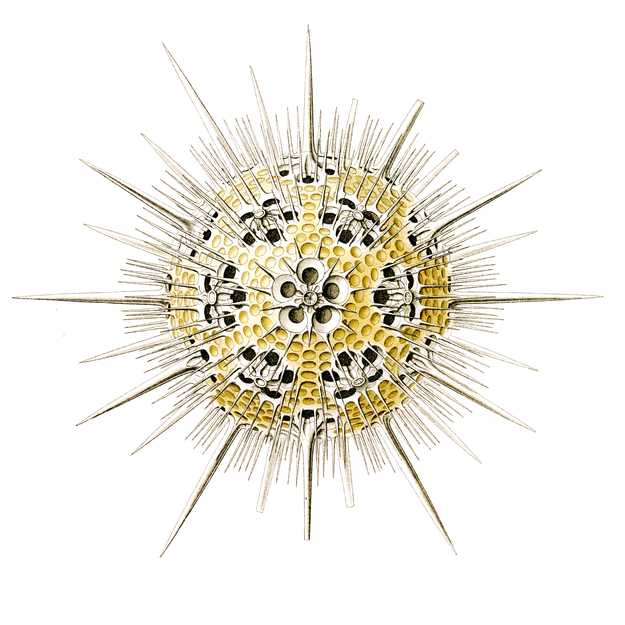The whole body of these marine Protozoa consists of a simple cell. Usually its living soft body has a very simple shape (globose, lenticular, conical, ovate, etc.); it consists, as in all Radiolaria, of two diverse main parts that are separated by a thin, firm skin. The inner part, the central capsule, covers the rounded cell nucleus; the outer part, the Calymma, forms a gelatinous cover around the former and is perforated by numerous Pseudopodia emanating from it (not presented here). The silicified hard shell that is dropped by the former at the surface of the Calymma is of a very diverse and delicate shape. Most Phaeodaria are denizens of the deep-sea and of very minor size.
Translation of the original German introduction by Ernst Haeckel:
Phylum of Protozoa; - class of Rhizopoda; - subclass of Radiolaria; - legion of Cannopylea (Phaeodaria). Phaeodaria or Cannopylea form a special main group (legion) within the subclass of Radiolaria or Strahlinge.
Translation by VR Translators Bangalore
This is one of the 100 pop science biology illustrations that were published from 1899 – 1904 in Leipzig by Ernst Haeckel through Verlag des Bibliographischen Instituts.

